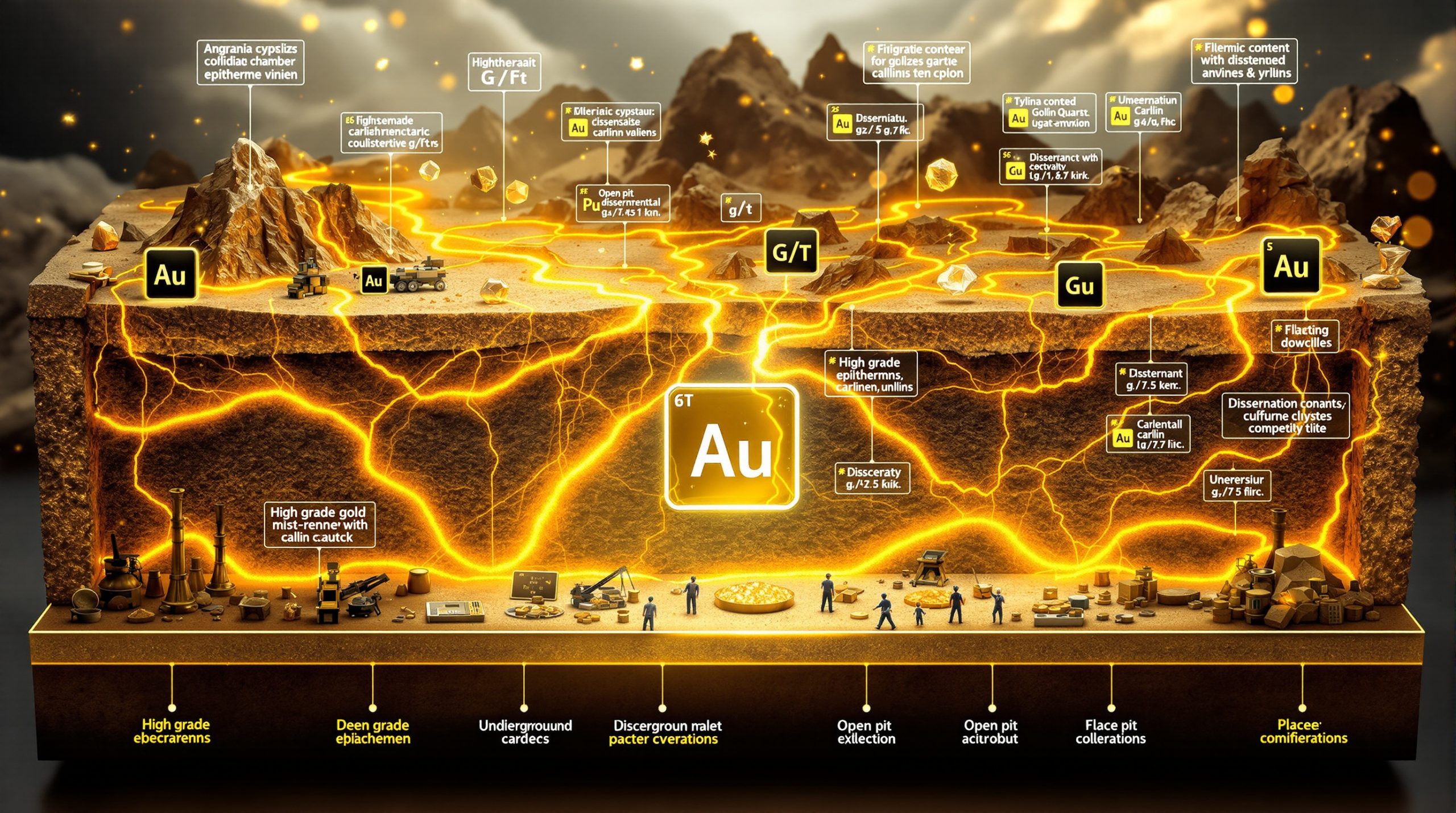Understanding the Recent Copper Price Surge: Global Market Dynamics
The copper market has been experiencing significant price volatility, with notable surges capturing the attention of investors, manufacturers, and market analysts alike. This comprehensive analysis explores the multifaceted factors driving these copper price surge and market fluctuations and what they mean for stakeholders across the global supply chain.
What Factors Are Driving the Recent Copper Price Surge?
The recent copper price surge stems from a complex interplay of infrastructure developments, supply constraints, and geopolitical factors creating a perfect storm for price appreciation.
Global Infrastructure Investments
Major infrastructure initiatives are dramatically reshaping copper supply chains, with particular focus on strategic mineral corridors. The U.S. International Development Finance Corporation (IDFC) recently finalized a landmark $500 million financing package for the Lobito corridor railway project, representing one of the most significant investments in African mineral infrastructure in decades.
"This critical infrastructure will transport essential minerals from Central Africa's copper belt to Angola's Atlantic coast port," noted the IDFC in their project announcement, highlighting the strategic importance of creating efficient supply routes for copper and other critical minerals.
The Lobito corridor specifically addresses a long-standing logistical bottleneck that has hampered efficient extraction and transportation of Central African copper reserves. By reducing transit times and transportation costs, this project is expected to eventually increase regional copper output—though in the short term, market anticipation of the project has contributed to price speculation.
Market Impact: Infrastructure developments like the Lobito corridor represent long-term structural changes to global copper supply chains, rather than quick fixes for current price pressures. The market is pricing in both short-term disruption during construction and long-term efficiency gains.
Supply-Demand Imbalances
Current market tightness reflects fundamental supply constraints meeting robust demand:
- LME copper cathode inventory dropped by 1,800 metric tons to 91,275 mt (as of June 30)
- Three consecutive days of inventory declines have been observed in key markets
- Smelters are actively increasing export efforts, further tightening spot market availability
- Secondary copper raw material supply has shown limited responsiveness to price increases
The persistence of tight supplies despite price incentives suggests structural rather than cyclical constraints in the copper production chain. European suppliers of secondary copper have maintained stable quotation coefficients month-on-month, defying the typical price elasticity expected when prices rise substantially.
Geopolitical Developments
Global political events have added another layer of complexity to copper market dynamics:
- Middle East tensions: Trump announced that a ceasefire agreement between Iran and Israel was nearing completion and could potentially be reached within a week, causing significant moves in the U.S. dollar index
- U.S. monetary policy uncertainty: Speculation about potential changes in Federal Reserve leadership has contributed to dollar weakness
- Trade policy concerns: Uncertainty surrounds the July 9 trade negotiation deadline, with potential tariff reimposition hanging in the balance
"If no agreement is reached by the deadline, the U.S. would reimpose broader tariffs," according to reports of Trump's statements on the ongoing trade negotiations, though he indicated the deadline might not be fixed.
The resulting U.S. dollar weakness has provided support for copper prices, as dollar-denominated commodities typically become more attractive to holders of other currencies when the dollar weakens.
How Are Copper Prices Performing Across Global Markets?
The copper market shows interesting regional variations, with price movements across different exchanges reflecting local supply-demand dynamics and broader market sentiment.
LME Market Performance
The London Metal Exchange, the world's benchmark for industrial metals trading, showed mixed price action:
- Recent closing price: $9,879/mt (down 0.17%)
- Session trading range: $9,823.5/mt to $9,883/mt
- Trading volume: 18,000 lots
- Open interest: 292,000 lots
The modest decline in LME prices came despite inventory drawdowns, suggesting some profit-taking after recent gains.
SHFE Market Dynamics
China's Shanghai Futures Exchange painted a different picture:
- Most-traded 2508 contract closed at 79,920 yuan/mt (up 0.23%)
- Trading range: 79,500 yuan/mt to 79,990 yuan/mt
- Trading volume: 39,000 lots
- Open interest: 213,000 lots
The divergence between LME and SHFE pricing (LME declining while SHFE gained) highlights the regional nature of copper supply constraints, with Chinese markets experiencing greater immediate tightness.
Regional Price Variations
Physical copper prices showed significant regional differences:
- Shanghai #1 copper cathode: 79,970-80,280 yuan/mt
- Guangdong #1 copper cathode: averaged 80,070 yuan/mt (+1,205 yuan/mt day-on-day)
- SX-EW copper in Guangdong: averaged 79,965 yuan/mt (+1,195 yuan/mt day-on-day)
These substantial day-on-day increases in physical copper prices in China's manufacturing hubs reflect acute local supply tightness and surging copper demand despite high price levels.
What's Happening in the Copper Spot Markets?
Spot markets provide crucial real-time indicators of supply-demand balance, revealing market tightness through premium structures and trading behavior.
Shanghai Spot Market Conditions
Shanghai's spot market shows clear signs of tightness:
- Premium against front-month contract: 70-150 yuan/mt (averaging 110 yuan/mt)
- Day-on-day premium increase: +45 yuan/mt
- Backwardation spread: approximately 100 yuan/mt
- Import losses widened to approximately 1,400 yuan/mt
The backwardation structure (where nearby prices exceed future prices) signals immediate supply scarcity rather than anticipated future shortages. The widening import losses reflect the disconnect between international and domestic Chinese prices.
Guangdong Market Trends
Similar dynamics played out in Guangdong, another key copper consumption hub:
- Spot premiums: 40-150 yuan/mt (average 95 yuan/mt, +40 yuan/mt day-on-day)
- SX-EW copper discounts: 20-0 yuan/mt (average -10 yuan/mt, +30 yuan/mt day-on-day)
- Firm supplier pricing despite buyer reluctance at elevated price levels
- Weaker trading activity compared to previous sessions
Suppliers maintained firm pricing policies, citing three consecutive days of inventory declines as justification. However, downstream buyers showed reluctance to purchase at these elevated price levels, resulting in somewhat subdued trading volumes despite the copper price surge and market fluctuations.
International Copper Trade Dynamics
Global copper trade showed interesting arbitrage patterns:
- Warrant prices: $30-44/mt for July shipment (unchanged day-on-day)
- Bill of Lading prices: $40-76/mt for July shipment (down $7/mt on average)
- EQ copper (CIF basis): $0-10/mt for July shipment (down $4/mt on average)
- SHFE/LME price ratio collapse with spot losses widening to 3,000 yuan/mt
The collapse in the SHFE/LME price ratio has created challenging conditions for international traders. Some market participants are reportedly considering shipping domestic warrants to Europe to exchange for locally registered CME-brand copper cathode, reflecting sophisticated arbitrage strategies to navigate the complex price differentials.
How Are Secondary Copper Markets Responding?
Secondary copper markets offer important insights into supply chain resilience and recycling dynamics during periods of price volatility.
Price Movements in Secondary Copper
The secondary copper market has seen significant price appreciation, though not matching the pace of primary copper:
- Secondary copper raw material prices: increased by 500 yuan/mt month-on-month
- Guangdong bare bright copper: 73,300-73,500 yuan/mt (+500 yuan/mt day-on-day)
- Price spread between copper cathode and copper scrap: 1,965 yuan/mt (widened by 513 yuan/mt)
- Difference between copper cathode rod and secondary copper rod: 1,410 yuan/mt
The widening spread between primary and secondary copper products indicates that secondary markets haven't fully kept pace with primary copper's price surge, potentially creating opportunities for substitution where technically feasible.
Supply Constraints
Secondary copper markets face their own supply challenges:
- Limited increase in overseas secondary copper raw material supply despite price increases
- European suppliers maintaining stable quotation coefficients month-on-month
- Persistent supply tightness supporting price premiums
The limited supply response to higher prices suggests structural constraints in the secondary copper market, possibly related to collection infrastructure limitations or competing demands for scrap metal.
What Are the Key Inventory Trends?
Inventory movements provide crucial signals about market balance and often drive short-term price movements.
Global Inventory Movements
Recent inventory trends show mixed signals:
- LME copper cathode inventory: decreased by 1,800 mt to 91,275 mt
- SHFE warrant inventory: increased by 1,650 mt to 25,346 mt
- Inventory declines supporting price premiums in spot markets
The divergent inventory movements between LME and SHFE warehouses suggest different regional supply-demand balances, with tighter conditions in markets connected to LME warehousing systems.
Strategic Inventory Management
Market participants are responding to inventory dynamics with strategic positioning:
- Reports of traders considering shipping domestic warrants to Europe
- Potential exchange for locally registered CME-brand copper cathode
- Inventory positioning to capitalize on regional price differentials
These sophisticated arbitrage strategies highlight the interconnected nature of global copper markets despite regional price disparities. Traders are actively seeking to profit from these disparities through creative warrant and physical metal transfers.
What's the Outlook for Copper Prices?
The outlook for copper prices depends on the interaction of short-term trading factors, medium-term market fundamentals, and long-term structural considerations.
Short-Term Price Drivers
Immediate price dynamics are influenced by:
- U.S. dollar weakness providing support for copper prices
- High spot premiums limiting significant upside at current levels
- Downstream purchasing constrained by elevated copper prices
- Trading dominated by traders rather than end-users
The prevalence of traders rather than industrial end-users at current price levels suggests a potentially unstable market equilibrium, with risk of correction if speculative positions unwind rapidly.
Medium-Term Market Factors
Looking several months ahead, key factors include:
- Potential impact of U.S. trade policy changes and tariff decisions
- Supply tightness from increased smelter exports
- Macro-fundamental resonance period affecting price volatility
- Seasonal demand patterns influencing buying sentiment
The July 9 trade negotiation deadline creates a key inflection point for market sentiment, with potential tariff reimposition representing a significant risk factor for global copper supply forecast.
Long-Term Structural Considerations
Strategic factors shaping the copper market over years include:
- Critical minerals corridor developments enhancing supply chain efficiency
- Strategic infrastructure investments affecting regional copper availability
- Evolving geopolitical landscape influencing global trade flows
- Potential changes in central bank leadership affecting monetary policy
The Lobito corridor project represents just one example of strategic infrastructure investments that will reshape copper supply chains over the coming years. Such projects have long development timelines but lasting impacts on market structure.
FAQ About Copper Market Fluctuations
What caused the recent surge in copper prices?
The recent copper price surge has been driven by a combination of tightening supply from increased smelter exports, geopolitical developments affecting the U.S. dollar, and strategic infrastructure investments like the Lobito corridor railway project enhancing critical mineral transport capabilities. Three consecutive days of inventory declines in key markets have further supported prices.
How are copper inventories affecting market prices?
Declining inventories, particularly the 1,800 mt reduction in LME copper cathode stocks to 91,275 mt, have contributed to market tightness and supported price premiums in spot markets. However, this has been partially offset by a 1,650 mt increase in SHFE warrant inventory to 25,346 mt, creating regional disparities in supply pressure.
What is the relationship between copper cathode and scrap prices?
The price difference between copper cathode and copper scrap has widened to 1,965 yuan/mt (an increase of 513 yuan/mt month-on-month), while the spread between copper cathode rod and secondary copper rod stands at 1,410 yuan/mt. These widening spreads reflect differential supply constraints between primary and secondary copper markets, with secondary supply showing less responsiveness to price increases.
How might U.S. trade policies impact copper prices?
Uncertainty around U.S. trade policies, including potential tariff reimposition after the July 9 negotiation deadline, continues to create market volatility. However, current U.S. dollar weakness is providing short-term support for copper prices despite these uncertainties. Any actual implementation of broader tariffs could significantly disrupt global copper trade flows and price relationships.
Copper Market Price Comparison Table
| Market Indicator | Current Value | Change | Notes |
|---|---|---|---|
| LME Copper Close | $9,879/mt | -0.17% | Trading volume: 18,000 lots |
| SHFE 2508 Contract | 79,920 yuan/mt | +0.23% | Trading volume: 39,000 lots |
| Shanghai #1 Cathode | 79,970-80,280 yuan/mt | +1,205 yuan/mt | Premium avg: 110 yuan/mt |
| Guangdong #1 Cathode | 80,070 yuan/mt | +1,205 yuan/mt | Premium avg: 95 yuan/mt |
| Guangdong SX-EW | 79,965 yuan/mt | +1,195 yuan/mt | Discount avg: -10 yuan/mt |
| Secondary Copper (Guangdong) | 73,300-73,500 yuan/mt | +500 yuan/mt | Bare bright copper |
| LME Inventory | 91,275 mt | -1,800 mt | Supporting spot premiums |
| SHFE Warrant Inventory | 25,346 mt | +1,650 mt | Partially offsetting LME decline |
Copper Market: Looking Beyond the Headlines
The current copper price surge reflects more than simple supply-demand dynamics—it represents the convergence of infrastructure development, geopolitical uncertainty, and sophisticated trading strategies in an increasingly complex global market.
For investors and industrial consumers alike, understanding these multi-layered dynamics is essential for navigating the copper market fluctuations effectively. While short-term price volatility may continue, the fundamental outlook for copper remains supported by infrastructure development and the metal's critical role in the global economy. Investors looking to capitalize on these trends might consider various copper investment strategies or exploring the potential of copper-uranium investments for diversification.
Additionally, market analysts are closely watching copper price predictions from industry experts to better understand potential future trajectories in this volatile but essential commodity market.
Disclaimer: This analysis is based on market data as of June 30, 2025. Market conditions may change rapidly, and decisions should be made based on the most current information available. The article does not constitute investment advice.
Looking to Profit from the Next Major Mineral Discovery?
Discovery Alert's proprietary Discovery IQ model instantly alerts investors to significant ASX mineral discoveries, including copper and critical minerals, turning complex data into actionable investment insights. Understand why major mineral discoveries can lead to substantial market returns by exploring Discovery Alert's dedicated discoveries page.




